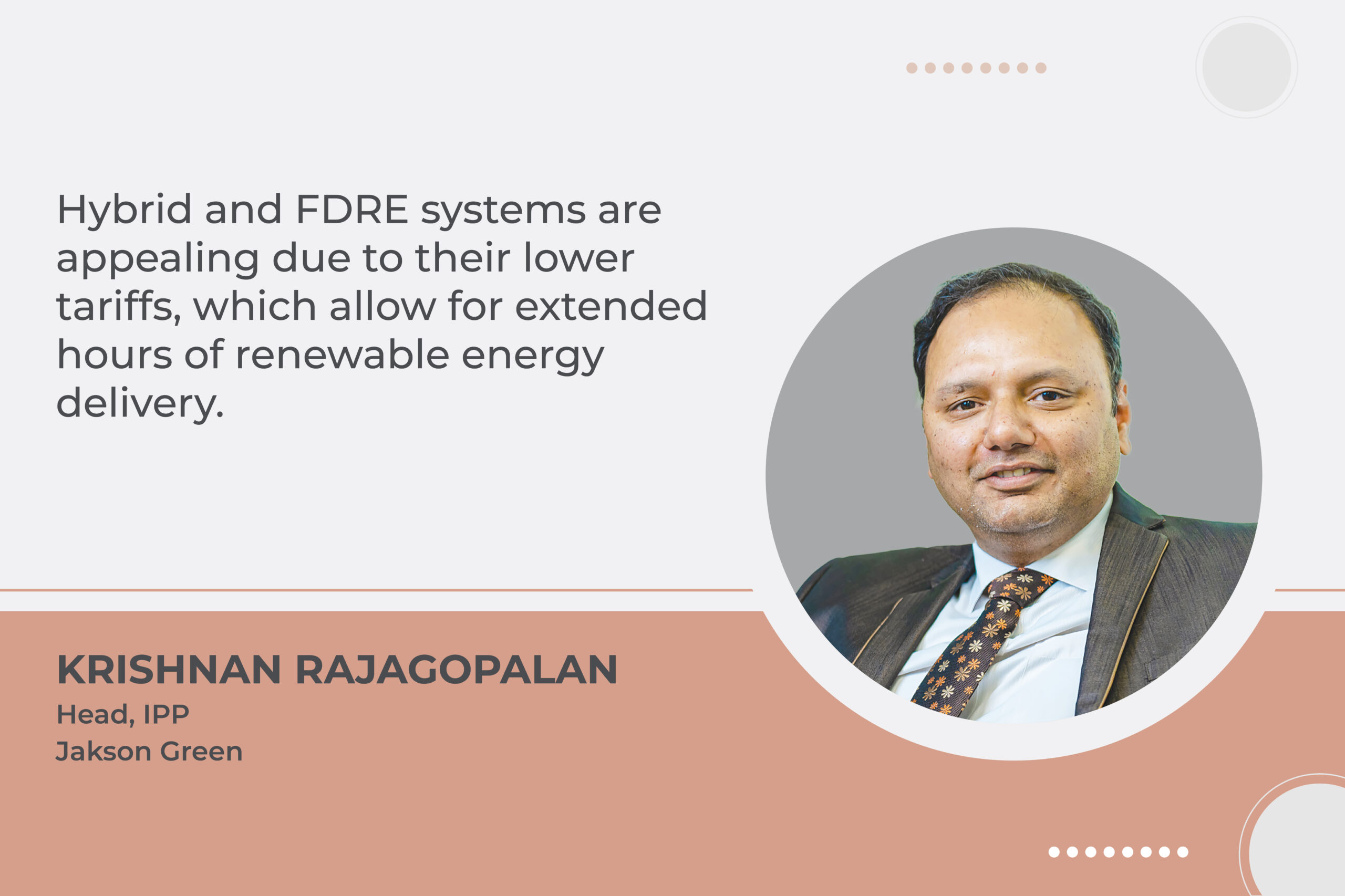Market moves beyond pure solar to hybrid models
By Staff Report September 25, 2025 7:37 pm IST
By Staff Report September 25, 2025 7:37 pm IST

The industry is now transitioning from pure-play solar to solar + storage and hybrid technologies, which has gained momentum by stabilising grid fluctuations of renewable energy, mitigating long hours of renewable generation, and increasing penetration into the grid.
Over the past decade, the renewable energy sector of India has gained significant momentum, fuelled by supportive government policies, capacity commitments from PSUs, and private players. Incentives for developers and technology providers, coupled with stable policy frameworks, have attracted large-scale investments, including foreign capital. The market is increasingly shifting from pure-play solar to hybrid solutions, combining solar, wind, and storage for enhanced grid stability. Krishnan Rajagopalan, Head of IPP at Jakson Green, highlights the significant role of solar energy in achieving the country’s 2030 clean energy target.
How crucial was solar in India’s early 2030 clean energy target, and will solar-wind-battery hybrids dominate future energy models?
There is a confidence and momentum in the market brought by policy changes, capacity commitments by PSUs and private stakeholders, along with Renewable Purchase Obligations fixed by the government. The incentives provided for developers and technology players have also encouraged confidence. The stable government and policies attracted large-scale investments and foreign investors to push capital into the Indian renewable markets. The initiatives and steps taken by the Union government and state governments over the last decade demonstrate the way to achieve the renewable energy goals.
Moreover, customers and utilities are now transitioning from pure-play solar to solar + storage and hybrid technologies, which have gained momentum by stabilising grid fluctuations of renewable energy, mitigating long hours of renewable generation, and increasing penetration into the grid. This also balances peak and non-peak hour generation. Firm & Dispatchable Renewable Energy (FDRE) bids are coming in strongly, and the Government of India has introduced Viability Gap Funding (VGF) to increase the addition of Battery Energy Storage capacity in the country. These initiatives will create a platform for round-the-clock clean and green power to flow into the grid at a larger scale.
The hybrid solar-wind-battery model is becoming dominant in the industry. Customers want to increase the hours of renewable energy in their load mix. Hybrid and FDRE systems are appealing due to their lower tariffs, which allow for extended hours of renewable energy delivery.What operational challenges or policy delays do large-scale solar projects face, and how is AI improving performance?
Land and connectivity remain significant challenges in large-scale solar projects. Regulatory uncertainty also persists due to varying state policies. However, streamlined clearances, reductions in GST, and exemptions on transmission policy initiatives charges at the CTU level are proving encouraging in stimulating investment and growth.
However, Artificial Intelligence (AI) and robotics have become integral to modern design considerations. AI-driven asset performance analysis, load and demand forecasting, and smart scheduling are shaping the market. Operations and maintenance are areas where AI and data analytics are widely applied. These technologies enable the optimal use of assets, enhancing energy delivery and driving sustained performance improvements.
***************************
We use cookies to personalize your experience. By continuing to visit this website you agree to our Terms & Conditions, Privacy Policy and Cookie Policy.